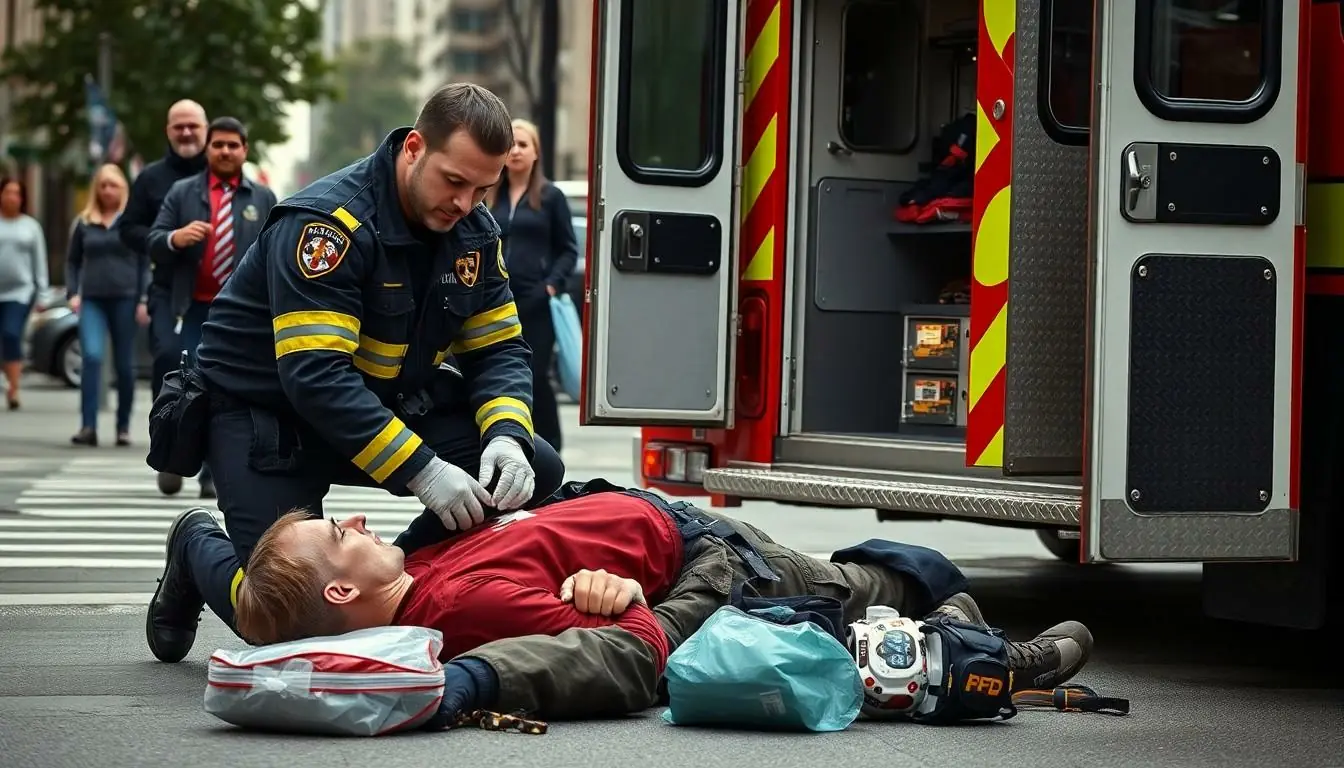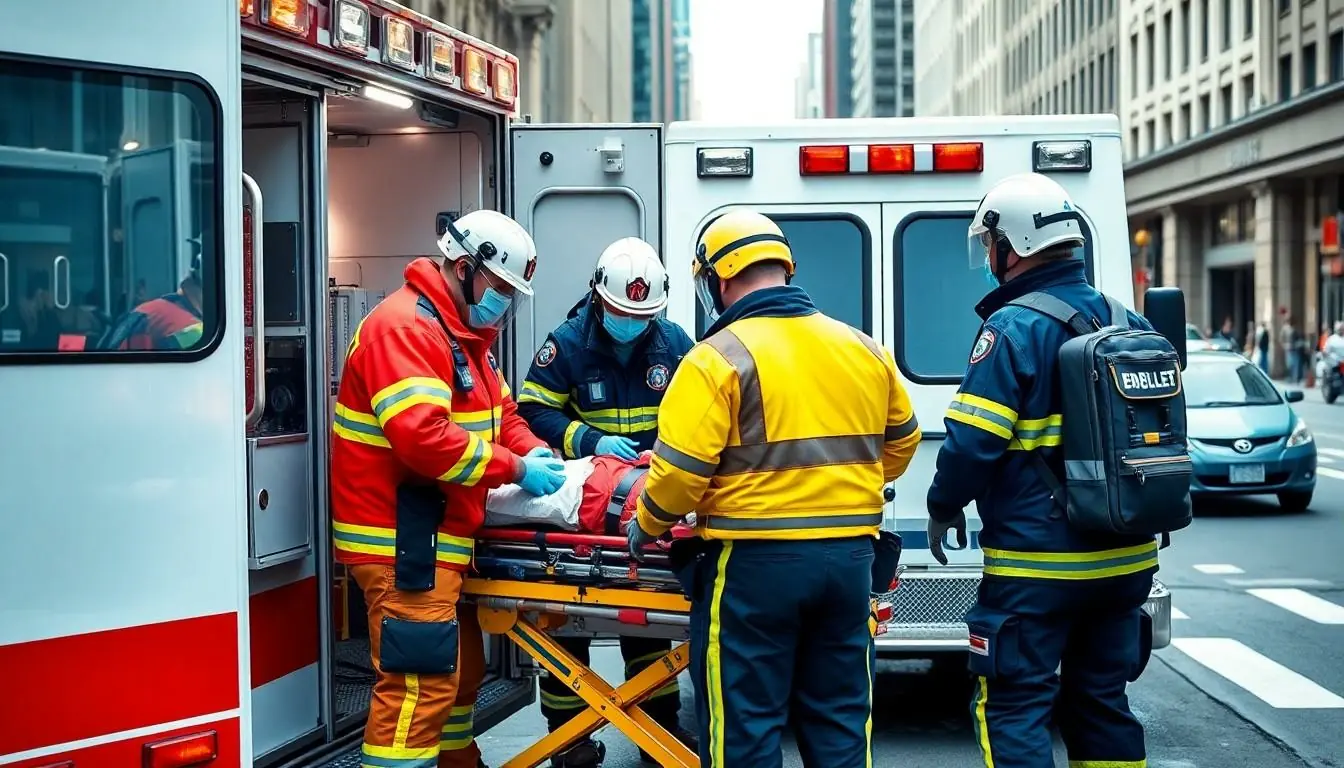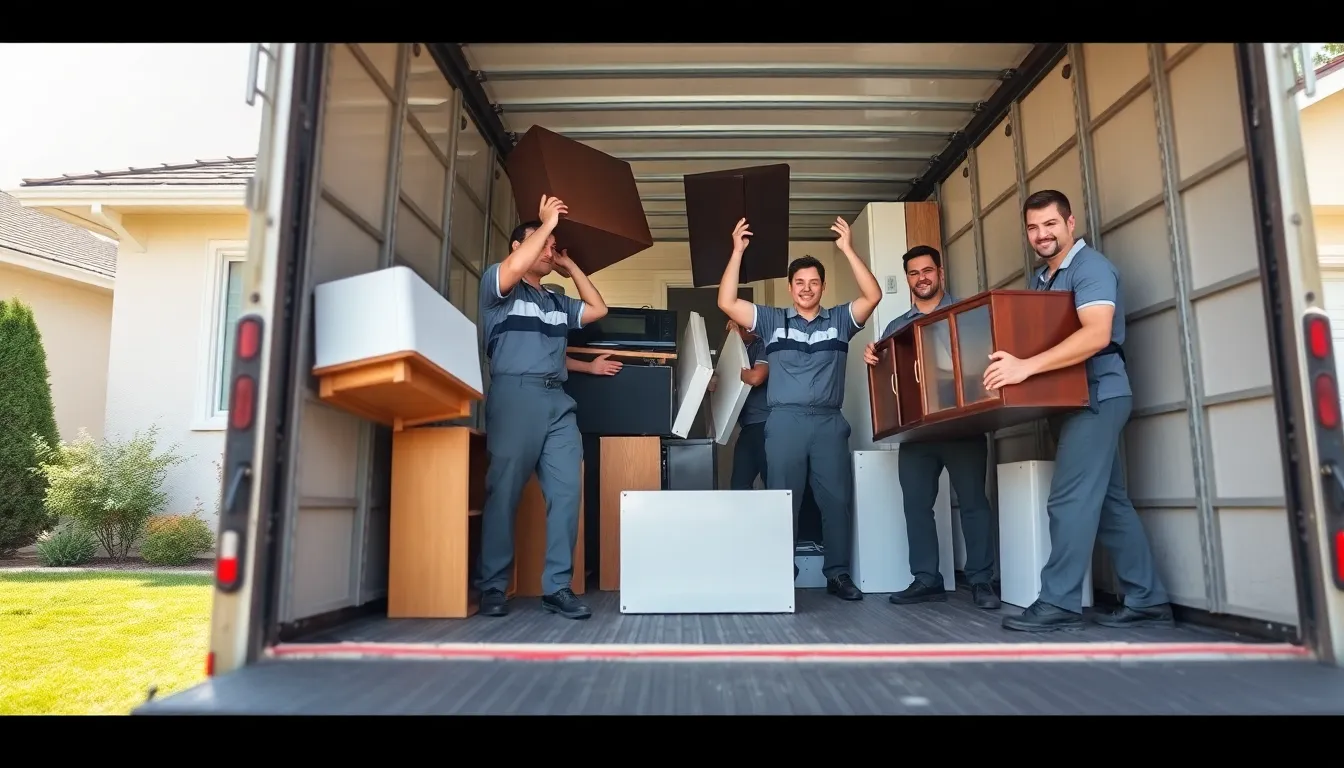When seconds count and lives hang in the balance emergency care in the streets becomes the vital lifeline between crisis and survival. From bustling city intersections to quiet suburban neighborhoods these modern-day heroes in high-vis vests rush to scenes that most people run from.
Street-side emergency care isn’t just about bandages and ambulances – it’s an intricate dance of quick thinking split-second decisions and sometimes MacGyver-like improvisation. Emergency medical responders transform sidewalks into surgical suites and parking lots into provisional trauma centers proving that lifesaving care doesn’t always need four walls and a roof.
First responders face unique challenges that no amount of classroom training can fully prepare them for. They’re the front-line warriors who bring the ER to the emergency dealing with everything from heart attacks in high-rise buildings to accidents in areas where even GPS gets confused.
Table of Contents
ToggleWhat Is Street Emergency Care
Street emergency care encompasses immediate medical assistance provided at the scene of accidents injuries or health crises in public spaces. This specialized form of pre-hospital care focuses on stabilizing patients before transport to medical facilities.
Types of Medical Emergencies on Streets
Street emergencies include cardiac arrests seizures traumatic injuries traffic accidents asthma attacks severe allergic reactions strokes falls overdoses wounds bleeding heat-related illnesses pedestrian accidents shock burns. The most frequent incidents involve:
- Traffic collisions resulting in multiple trauma blunt force injuries spinal cord damage
- Cardiovascular events including heart attacks chest pain breathing difficulties
- Environmental emergencies such as heat exhaustion hypothermia dehydration
- Physical assaults leading to head injuries lacerations broken bones
- Mental health crises requiring immediate intervention stabilization
First Responders and Mobile Units
Mobile emergency units consist of paramedics EMTs emergency physicians nurses equipped with portable medical devices medications supplies. These teams operate through:
- Advanced Life Support ambulances carrying cardiac monitors defibrillators intubation equipment
- Basic Life Support vehicles stocked with first aid trauma kits oxygen delivery systems
- Rapid Response Units featuring compact SUVs motorcycles for quick urban navigation
- Mobile Command Centers coordinating multiple responders during mass casualty events
- Specialty Units equipped for hazardous materials chemical exposures mass gatherings
Each unit maintains direct communication with emergency departments hospitals dispatch centers allowing seamless patient handoffs coordinated responses.
Essential Emergency Care Equipment
Street emergency response teams carry specialized equipment designed for rapid deployment during critical situations. This equipment enables responders to deliver life-saving care directly at incident scenes.
Basic First Aid Supplies
Emergency responders stock their vehicles with standardized first aid items:
- Sterile gauze pads in 4×4 inch 2×2 inch sizes
- Medical tape rolls for wound dressing
- Bandages including elastic compression triangular varieties
- Antiseptic wipes alcohol pads sterile saline
- Trauma shears gloves face masks eye protection
- Cold packs heat packs instant activation
- Emergency blankets space blankets thermal wraps
- Splints cervical collars various sizes
- Blood pressure cuffs stethoscopes
- CPR masks barrier devices
Advanced Medical Tools
Modern emergency vehicles contain sophisticated medical equipment:
| Equipment Type | Primary Function | Response Time |
|---|---|---|
| AED Units | Cardiac Emergency | 30-60 seconds |
| Oxygen Systems | Respiratory Support | 15-30 seconds |
| Suction Units | Airway Clearance | 10-20 seconds |
| ECG Monitors | Heart Monitoring | 45-90 seconds |
- Intubation kits laryngoscopes airway adjuncts
- IV administration sets fluid warmers
- Medication boxes controlled substance storage
- Patient monitoring devices pulse oximeters
- Communication systems medical telemetry units
- Portable ventilators breathing circuits
- Trauma response kits chest decompression sets
Street Emergency Response Protocols
Emergency response protocols establish systematic approaches for managing street-level medical crises through standardized procedures. These protocols guide first responders in delivering effective care while maintaining safety standards in unpredictable environments.
Scene Safety Assessment
Scene safety assessment starts with a 360-degree scan of the immediate environment for potential hazards. First responders evaluate environmental risks including downed power lines, hazardous materials spills, unstable structures, traffic patterns, weather conditions. The assessment involves identifying specific threats:
- Physical hazards: Sharp debris, broken glass, exposed metal
- Environmental dangers: Fire, smoke, flooding, extreme temperatures
- Human factors: Hostile individuals, crowd dynamics, violent situations
- Chemical risks: Fuel leaks, toxic fumes, industrial spills
- Structural concerns: Building damage, infrastructure instability
Triage Decision Making
Triage protocols categorize patients based on injury severity using color-coded priority levels. Emergency responders evaluate vital signs, consciousness levels, injury types to determine treatment order:
| Priority Level | Color Code | Patient Condition |
|---|---|---|
| Immediate | Red | Life-threatening |
| Delayed | Yellow | Serious but stable |
| Minor | Green | Walking wounded |
| Deceased | Black | No vital signs |
Medical teams assess breathing rate, circulation status, mental state. The START (Simple Triage And Rapid Treatment) method enables rapid patient classification in mass casualty incidents. Responders document initial findings using standardized triage tags for tracking patient status throughout treatment.
Challenges of Providing Care on Streets
Street emergency care presents unique obstacles that impact the delivery of medical services in unpredictable environments. These challenges require specialized training, adaptable strategies, and constant situational awareness from first responders.
Environmental Factors
Weather conditions directly affect emergency care delivery on streets with temperature extremes creating additional medical risks. Rain reduces visibility while making surfaces slippery, complicating patient transport and equipment handling. Strong winds interfere with administering medications or maintaining sterile conditions. Poor lighting in nighttime emergencies hampers accurate patient assessment. Traffic noise masks critical verbal communication between team members. Uneven terrain creates stability issues for medical equipment placement. Heat radiating from asphalt intensifies patient discomfort during summer emergencies. Cold surfaces accelerate hypothermia risks in winter incidents.
Crowd Management
Bystanders gathering at emergency scenes create immediate challenges for first responders’ access to patients. Curious onlookers recording incidents with phones obstruct treatment paths. Emergency teams deploy crowd control barriers to establish clear work zones. Traffic controllers redirect vehicles away from treatment areas. Law enforcement partners maintain emergency perimeters. Professional crowd managers coordinate with medical teams to manage large gatherings. Designated team members communicate updates to family members. Emergency vehicles position strategically to shield treatment areas from public view. Mobile command centers organize response efforts in mass casualty events.
Working With Emergency Services
Emergency services coordination integrates multiple agencies into a unified response system for street-side medical emergencies. This integration ensures seamless delivery of care from initial contact through hospital admission.
Coordinating With First Responders
First responders operate through a structured chain of command that designates specific roles for each team member. Police secure the perimeter while firefighters manage hazardous conditions such as vehicle fires chemical spills or structural damage. Emergency medical technicians perform patient assessments triage victims establish treatment priorities. Multi-agency coordination centers track available resources dispatch appropriate units assign geographic sectors for large-scale incidents. The Incident Command System streamlines communication between agencies through:
- Unified command posts for complex emergencies
- Clear reporting hierarchies for field personnel
- Resource allocation tracking systems
- Cross-agency tactical channels
- Joint training exercises for improved teamwork
Communication Systems
Emergency services utilize integrated communication networks that connect dispatch centers ambulances hospitals command posts. Digital radio systems feature encrypted channels dedicated frequencies automatic vehicle location tracking. Modern emergency communication equipment includes:
- Mobile data terminals in response vehicles
- Computer-aided dispatch systems
- Real-time patient data transmission
- GPS-enabled resource tracking
- Hospital status monitoring
The Emergency Medical Dispatch protocol guides operators through standardized questioning to determine response priorities send appropriate resources. Satellite communication systems provide backup coverage when traditional networks fail during disasters. Radio interoperability allows different agencies to communicate directly reducing response delays improving coordination.
Best Practices for Street Medical Care
Street medical care requires systematic approaches to maximize patient outcomes in challenging environments. These practices emphasize rapid assessment combined with precise treatment protocols.
Patient Assessment Methods
The primary survey follows the ABCDE protocol (Airway, Breathing, Circulation, Disability, Exposure) to identify life-threatening conditions. Responders check vital signs including blood pressure, pulse, respiratory rate, temperature, oxygen saturation levels, and Glasgow Coma Scale scores. Physical examination focuses on visible injuries, neurological status, and signs of internal trauma. Medical history gathering incorporates SAMPLE methodology (Signs/Symptoms, Allergies, Medications, Past medical history, Last oral intake, Events leading to injury).
| Assessment Component | Key Parameters |
|---|---|
| Vital Signs | BP, HR, RR, Temp, SpO2 |
| Consciousness | GCS Score (3-15) |
| Physical Exam | Head-to-toe inspection |
| Medical History | SAMPLE format |
Treatment Guidelines
Emergency care providers follow evidence-based protocols aligned with current medical standards. Treatment priorities include hemorrhage control, airway management, pain management, and wound care. Medication administration adheres to strict dosing protocols based on patient weight, age, and condition severity. Providers document all interventions using standardized forms to ensure continuity of care.
| Treatment Priority | Critical Actions |
|---|---|
| Hemorrhage Control | Direct pressure, tourniquets |
| Airway Management | Head-tilt, chin-lift, intubation |
| Pain Management | Analgesics per protocol |
| Wound Care | Cleaning, dressing, immobilization |
Conclusion
Street emergency care stands as a vital link in the healthcare system bringing critical medical services directly to where they’re needed most. The success of these operations relies heavily on well-trained professionals skilled paramedics advanced equipment and seamless coordination between multiple agencies.
The evolution of street-side emergency care continues to improve through enhanced communication systems standardized protocols and specialized training. These advancements coupled with dedicated emergency response teams ensure that patients receive the best possible care during their most vulnerable moments.
The future of emergency care in the streets looks promising as technology and medical knowledge advance. Yet it’s the human element – the dedication skill and quick thinking of first responders – that remains at the heart of this life-saving service.




